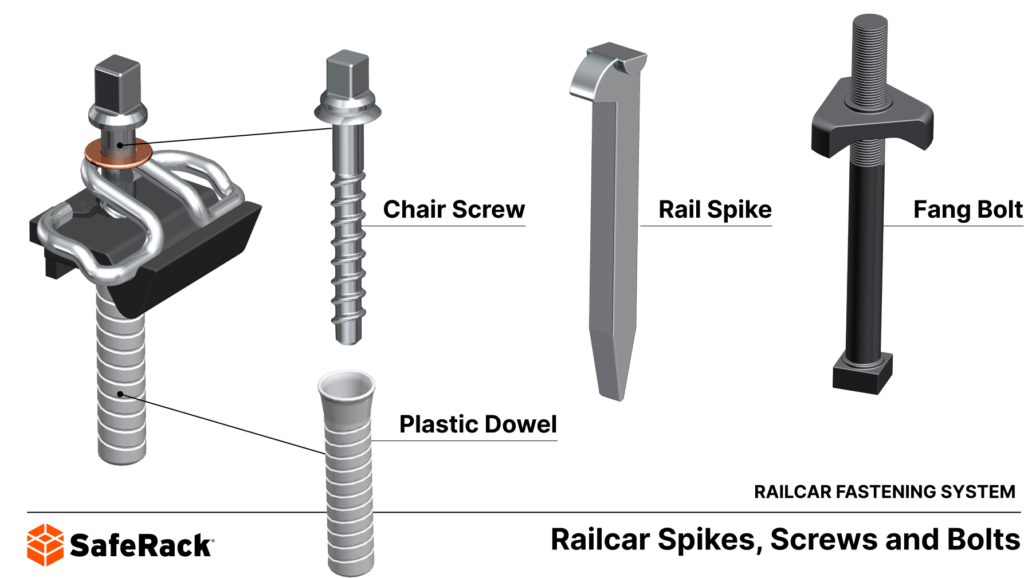Rail spikes are large, chisel-shaped nails with offset heads used to secure rails and base plates to sleepers. These spikes feature flat-edged points driven perpendicular to wood grain, providing superior resistance to loosening. Dog spikes, a variation with pointed penetrating ends and dog-head-shaped lugs, offer enhanced gripping power for specific applications.

Overview of Rail Fastening Systems
Rail fastening systems have utilized various fixing methods throughout history, from wooden pegs in prehistoric trackways to modern elastic fasteners. The development of specialized fastening components reflects ongoing efforts to improve track stability, reduce maintenance, and enhance safety. These systems must withstand constant vibration, heavy loads, and environmental stresses while maintaining precise track alignment.
Rail spikes remain cost-effective fastening solutions for many railway applications, particularly on wooden sleepers. Proper spike installation technique ensures maximum holding power and longevity. SafeRack’s commitment to railroad safety extends to providing comprehensive solutions for railcar loading facilities, including fall protection systems and spill containment equipment.
Learn more: Core Components of a Rail Fastening System | Railroad Construction Facts
Frequently Asked Questions
Rail spikes are driven perpendicular to wood grain and slightly angled inward toward the rail to maximize holding power. This orientation prevents splitting along grain lines while creating mechanical resistance against outward rail forces during thermal expansion and train passage.
Standard practice uses four spikes per tie on tangent (straight) track—two per rail on alternating sides. Curved sections may require six to eight spikes per tie to resist additional lateral forces, with extra spikes on the outside rail where forces are greatest.
A correctly installed rail spike in sound timber provides approximately 5,000-7,000 pounds of withdrawal resistance. This holding power decreases over time due to wood degradation, spike loosening from vibration, and seasonal wood expansion and contraction cycles.



